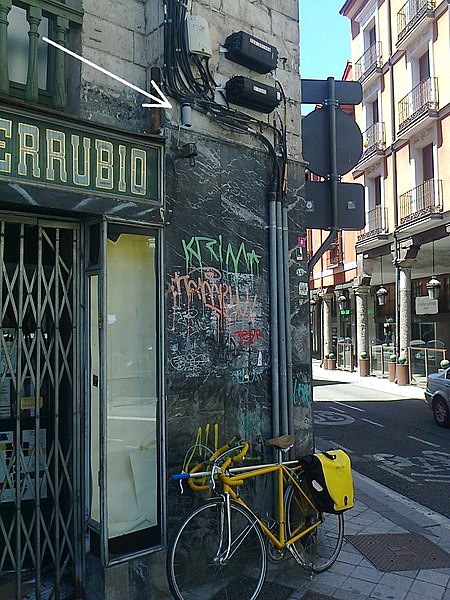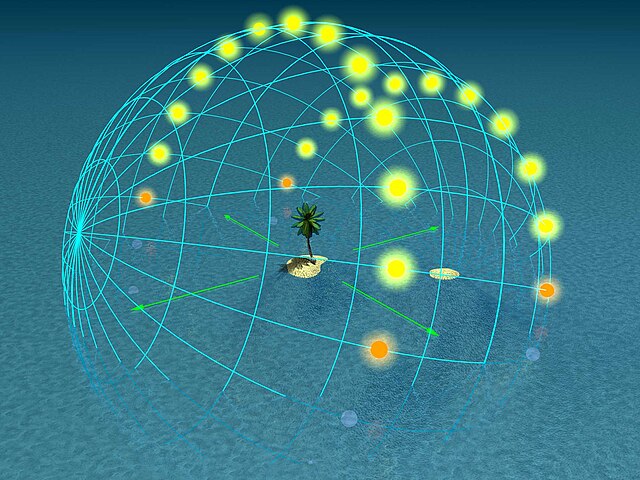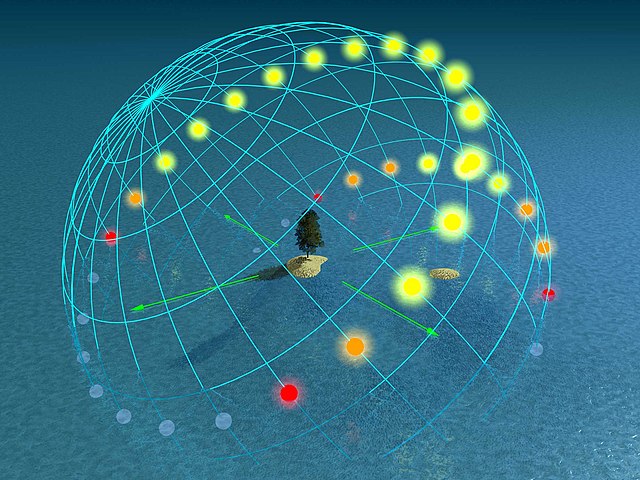Solarigraphy is a concept and a photographic practice based on the observation of the sun path in the sky and its effect on the landscape, captured by a specific procedure that combines pinhole photography and digital processing. Invented around 2000, solarigraphy uses photographic paper without chemical processing, a pinhole camera and a scanner to create images that catch the daily journey of the sun along the sky with very long exposure times, from several hours to several years. The longest known solarigraph was captured over the course of eight years. Solarigraphy is an extreme case of long-exposure photography, and the non-conventional use of photosensitive materials is what makes it different to other methods of sun paths capture such as the Yamazaki´s "heliographys"
Solarigraph with the sun paths between July 2018 and May 2019 in a street at Valladolid, Spain.
Situation of a solarigraphic camera, a can, stuck to a building to obtain the upper photo.
Sun path, sometimes also called day arc, refers to the daily and seasonal arc-like path that the Sun appears to follow across the sky as the Earth rotates and orbits the Sun. The Sun's path affects the length of daytime experienced and amount of daylight received along a certain latitude during a given season.
This solargraph exposed over the course of a year shows the Sun's paths of diurnal motion, as seen from Budapest in 2014.
0° latitude (the Equator)
20° latitude
50° latitude






